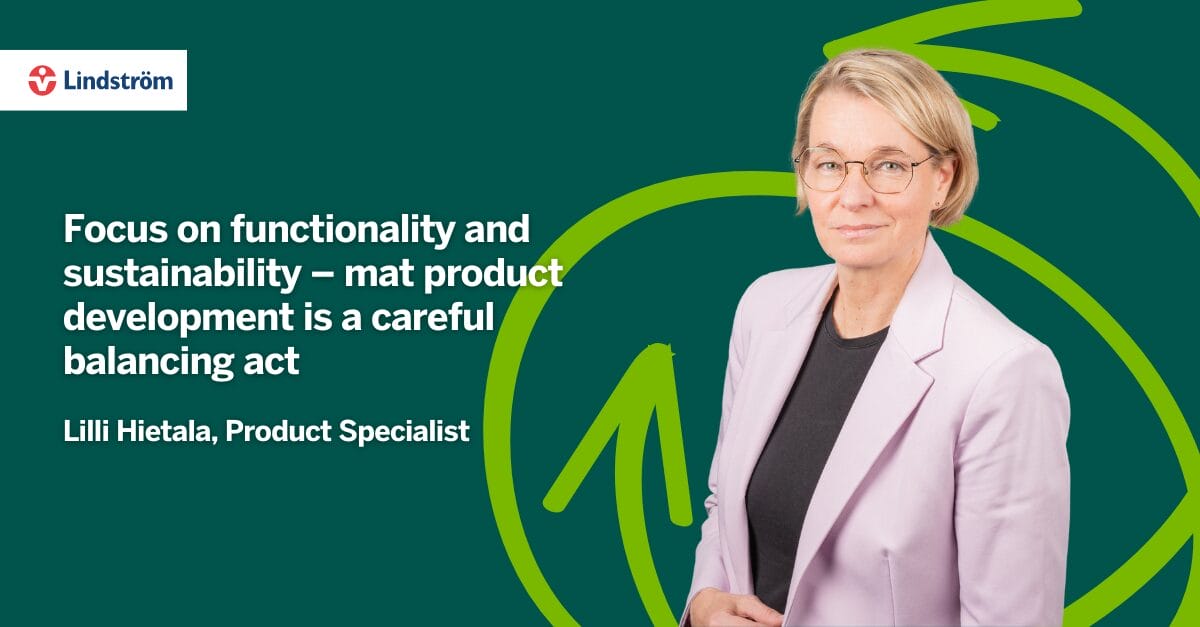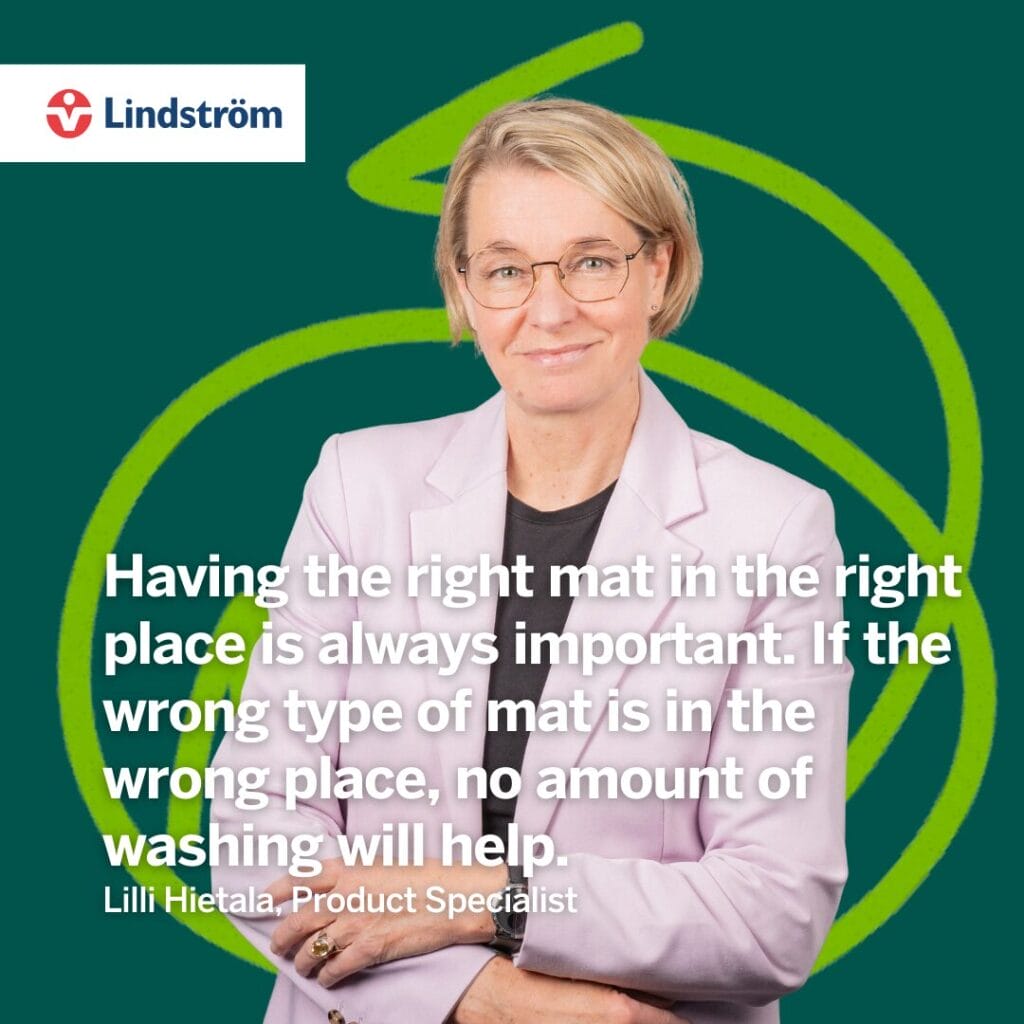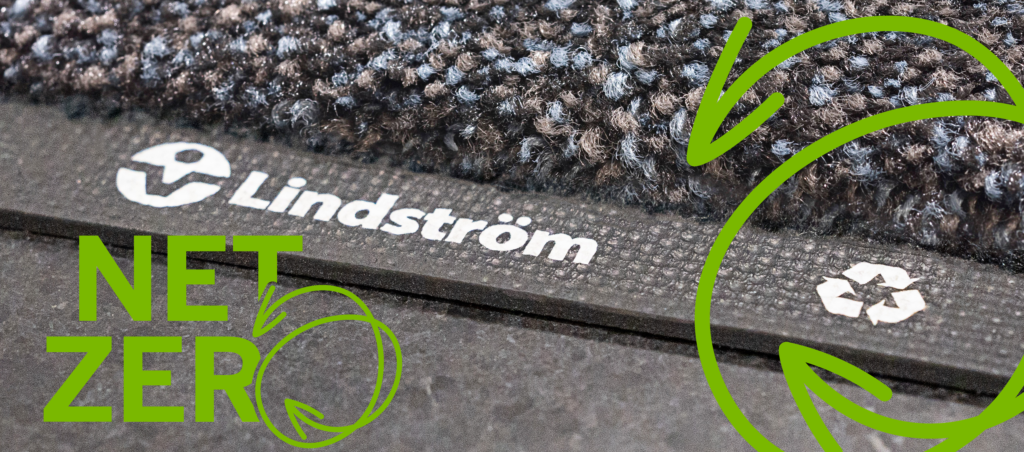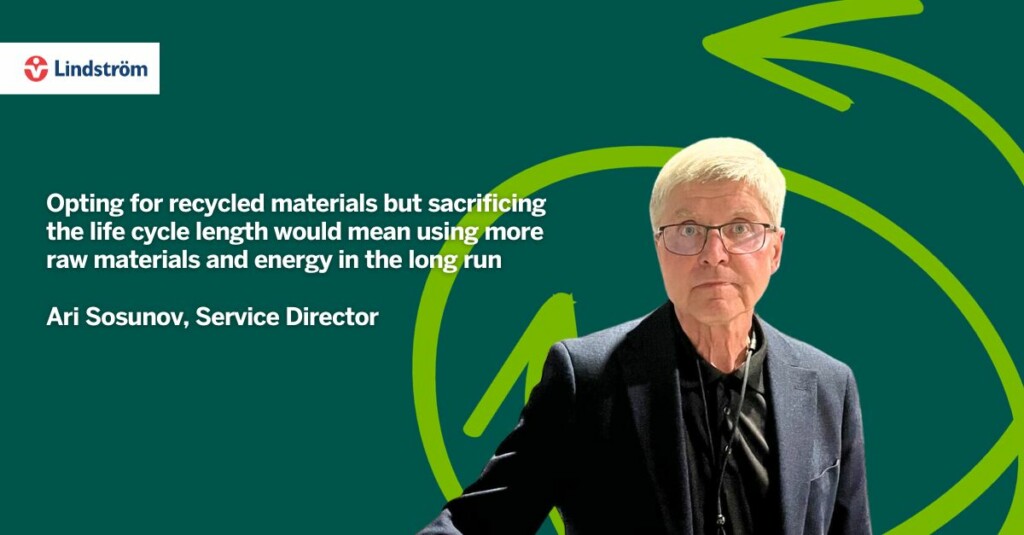
Mat product development balances functionality and sustainability
The mat is much more than meets the eye, one will discover when diving into the art of mat product development. Our Product Specialist Lilli Hietala discusses the importance of raw materials, rigorous testing, and a sustainable mindset in creating ever-better mats.
When Product Specialist Lilli Hietala joined Lindström almost two years ago, little did she know how mats would charm her.
“At first, I thought that mats were just mats,” Lilli says with a smile. Diving headfirst into developing and testing more sustainable mats has opened a whole new world for the long-time textile industry professional.
“Even though mats only have two materials, the yarn and the rubber, they are one of the most complex products to manufacture.”
Product development with a sustainable mindset
Lilli is part of the team that has created new standard mats with 75% recycled nylon yarn and phthalates-free rubber. The development work is all about balancing sustainability and functionality and helping the company reach net-zero emissions by 2050.
Lilli points out that striving for 100% recycled raw materials is not always realistic. Using only recycled materials could mean losing durability or other important functionalities.
“The goal is to use recycled materials and keep the quality as high as possible. We don’t want to generate more waste in the name of sustainability,” she explains.
“What I like best about our product development is that we don’t only look for recycled materials. Already at the beginning start to think about what will happen to the mat at the end of its life cycle.”
Currently, mats are reused as industrial mats, burned for energy, or ground into new materials, such as acoustic panels, at the end of their life cycle. An ongoing project with a European partner further explores how the rubber and the yarn can be separated and processed into raw materials for new mats.
Lilli says a sustainable and proactive mindset is a prerequisite for all Lindström’s partners and suppliers.
“It’s a snowball effect. Our goal is to manufacture as few products as possible to avoid overproduction. We make sure that products are long lasting in use. We want to share this goal with our partners.”
Partners also play a key role in mat product development and testing. Lilli emphasizes that Lindström couldn’t do it all alone.
“We work with the best raw material and mat manufacturers in Europe. Cooperation with them enables our product development.”

Testing, testing
Lindström and its partners are constantly testing new materials and compositions to find the perfect balance of sustainability and functionality.
Rubber is a challenging material that behaves differently in different temperatures and humidities. Thus, finding the right kind of rubber mixture is essential. Recently, Lindström removed phthalates, commonly used in rubber products to improve elasticity, from all new mats.
“It’s always important to take steps forward. The next step is to introduce recycled rubber.”
Once the rubber and yarn are put together, mechanical testing ensures they last the constant wear and washing. Durability is paramount, as on average standard mat is in circulation for six to eight years and up to 145 washes. Lilli and her team wash mats and test the quality in different stages of the mat’s life cycle.
The team also tracks how mats behave in real use. The mat edges shouldn’t ripple, as it can cause a tripping hazard. Lilli explains that another key thing to look out for is pile positioning.
“When the pile is upright, all the sand and dirt travel to the bottom of the mat and are trapped there. If the pile is flat or too short, we lose part of that functionality.”
Lindström’s home country of Finland is an excellent proving ground, as the Nordic weather – the worst possible weather for mats, according to Lilli – puts their functionality to the test.
“Slush and road salt are really tough on mats. That’s why it’s also essential to plan carefully how many mats there are in a space, where they are placed, and how often they are changed.”
Right mats in right places
Choosing the right products and using them correctly is essential to ensuring that the mats are long-lasting and functional. For example, UV light is detrimental to rubber, which is why mats designed for indoor use should not be placed in entranceways where they are more exposed to sunlight.
“Having the right mat in the right place is always important. If the wrong type of mat is in the wrong place, no amount of washing will help,” Lilli explains.
Lindström is always happy to help customers choose suitable mats and define how often they should be changed.
“We plan the entrance to a building step by step. The first mat should retain all bigger particles, and the next should retain moisture. Ultimately, the shoe’s sole should be clean and dry.”
Working at Lindström has undoubtedly broadened Lilli’s perspective on mat materials and functionalities. She has also developed a habit of checking mats in public spaces or offices.
“It’s an occupational disease. Sometimes, I just cannot resist turning the corner of the mat and checking who the manufacturer is and when the mat has entered circulation,” she says, laughing.


